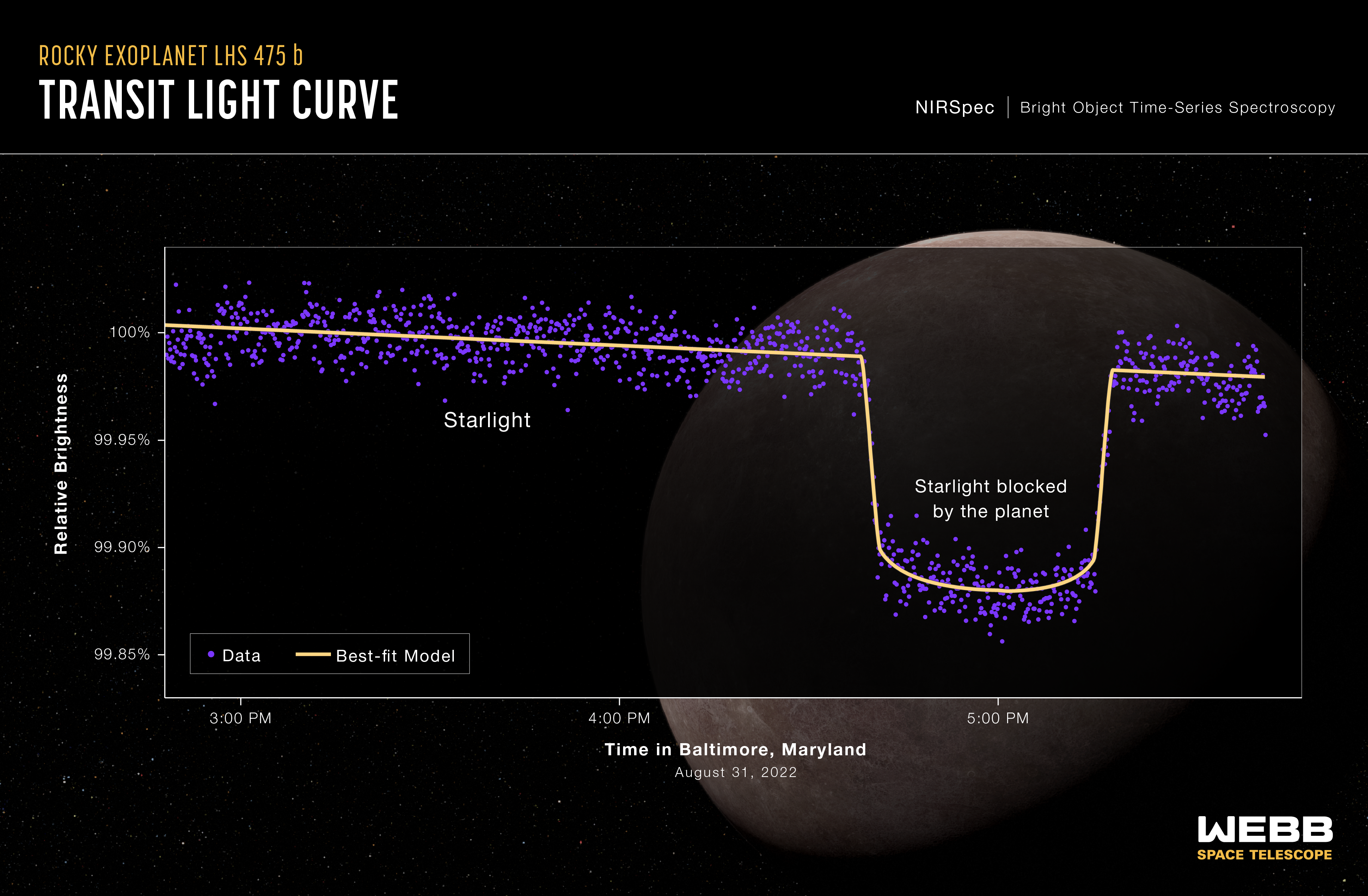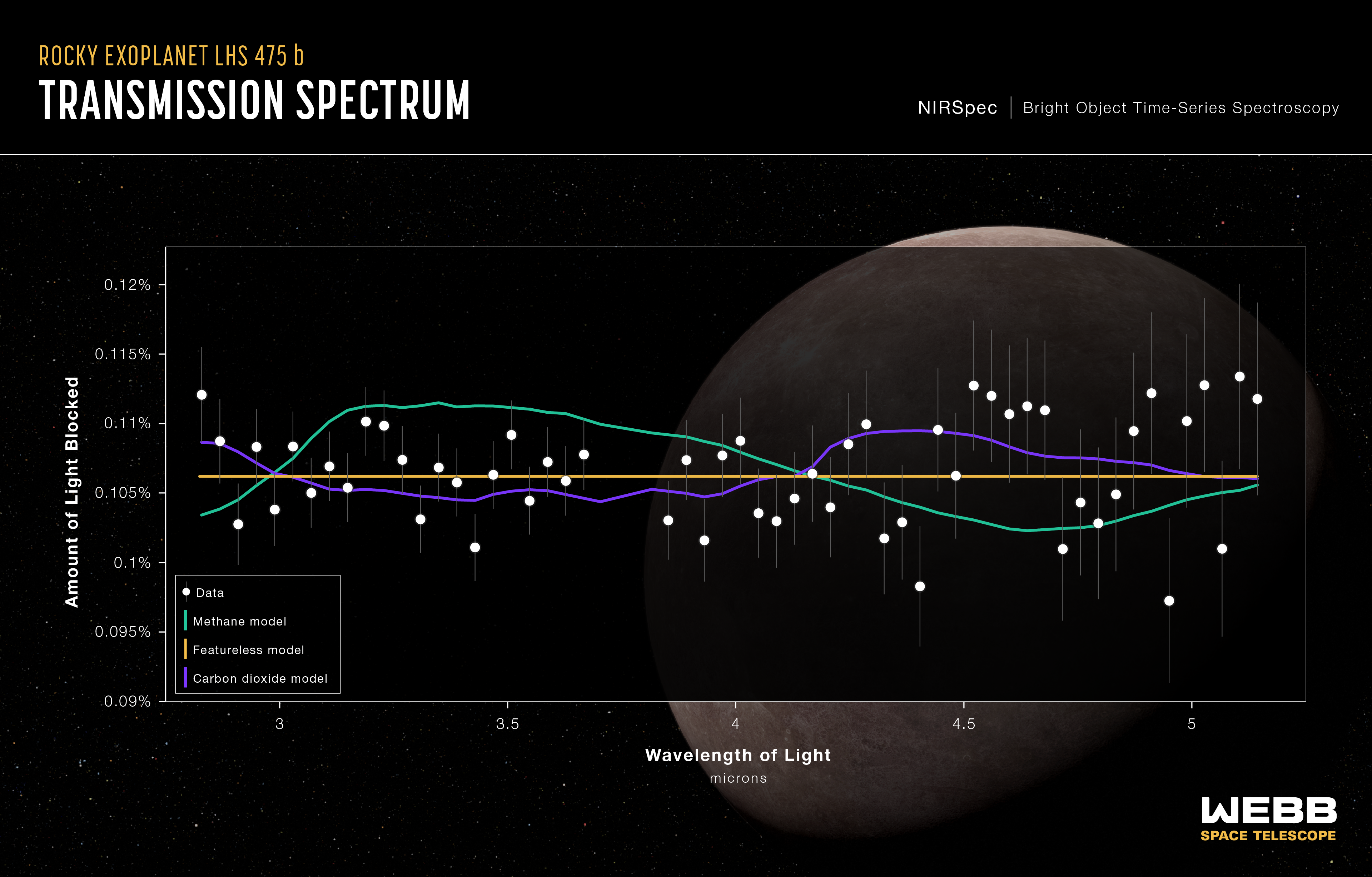1 min read
Exoplanet LHS 475 b and Its Star (Illustration)

This illustration reflects that exoplanet LHS 475 b is rocky and almost precisely the same size as Earth based on new evidence from NASA’s James Webb Space Telescope. The planet is only a few hundred degrees warmer than our home planet.
The planet whips around its star in just two days, far faster than any planet in the solar system, but its red dwarf star is less than half the temperature of the Sun. Researchers will follow up this summer with another observation with Webb, which they hope will allow them to definitively conclude if the planet has an atmosphere.
LHS 475 b is relatively close, 41 light-years away, in the constellation Octans.
This illustration is based on observations from Webb. Webb has not captured a direct image of this planet.
- Release DateJanuary 11, 2023
- Science ReleaseNASA’s Webb Confirms Its First Exoplanet
- CreditIllustration: NASA, ESA, CSA, Leah Hustak (STScI)
Related Images & Videos

Exoplanet LHS 475 b (NIRSpec Transit Light Curve)
How do researchers spot a distant planet? By observing the changes in light as it orbits its star. A light curve from NASA’s James Webb Space Telescope’s Near-Infrared Spectrograph (NIRSpec) shows the change in brightness from the LHS 475 star system over time as the planet...

Exoplanet LHS 475 b (Transmission Spectrum)
A flat line in a transmission spectrum, like this one, can be exciting – it can tell us a lot about the planet. Researchers used NASA’s James Webb Space Telescope’s Near-Infrared Spectrograph (NIRSpec) to observe exoplanet LHS 475 b. As this spectrum shows, Webb did not observe...
Share
Details
Laura Betz
NASA’s Goddard Space Flight Center
Greenbelt, Maryland
laura.e.betz@nasa.gov
NASA, ESA, CSA, Leah Hustak (STScI)




























